Iron plays an important role in the human body, which is why physicians around the world are worried about the tendency for iron deficiency states to increase in people. According to data recently published by WHO, 60% of the world's population has a deficiency of iron, while 30% have a deficiency of iron so large that it is already a disease - iron deficiency anemia. Products that increase hemoglobin are a safe alternative to medical treatment of iron deficiency conditions at the initial stage of the disease, to prevent and increase the effectiveness of therapy.
Material Content:
Products to increase hemoglobin. Sources of Iron
In the human body, iron is not synthesized. Its receipt is provided by food. Recipes and products for increasing hemoglobin were of interest to doctors from ancient times. In medical papyri of ancient Egypt, and later in medical treatises of ancient Greece and ancient Rome, there are recipes for treating anemia with the help of products that increase hemoglobin. In ancient medicine, watercress juice, milk, and grape juice were used to increase hemoglobin levels. The great Muhammad Hussein Shirazi in the treatise "Mahzan-ul-adviya" ("Treasury of drugs") advised taking carrots for anemia. In Russia, anemia was treated with linden tea with honey and wine. In England, with anemia, biscuits with red wine were prescribed. To prevent anemia, Mesopotamia doctors prepared a medicine by placing a copper cylinder with an iron rod in a ceramic vessel.Juice of acidic berries and fruits poured into such a vessel was enriched with iron. Such an effect in physics is known as electrocorrosion.
It is interesting:how to quickly raise hemoglobin at home

The human body contains ~ 4 g of iron. Of them:
- 75% is part of red blood cells in the form of hemoglobin;
- 20% is stored in cells for a rainy day;
- 5% is found in muscle tissue and in enzymatic systems.
With proper nutrition, a person does not experience a deficiency of this element. But this rule works if, in childhood, the body was able to deposit a sufficient amount of Fe.
With food, our body receives most of the nutrients, including iron. But in most of the diet it is contained in an inorganic form, so the bioavailability of Fe in most products does not exceed 30% (an average of 10%).
In plant foods and medicines, iron is contained in an inorganic form represented by ions of divalent and trivalent Fe. Its bioavailability is 8-15%. In an organic or heme form, iron is divalent, so it is absorbed almost completely - by 40-45%. In the diet, it makes up an insignificant part of the whole element obtained with food - 7-12%. But it has a high degree of bioavailability and its digestibility practically does not change under the influence of other products. When compiling a diet for enriching the body with iron, one should choose not only the products with the greatest amount of it, but also take into account the form of entry and the body's ability to absorb it.
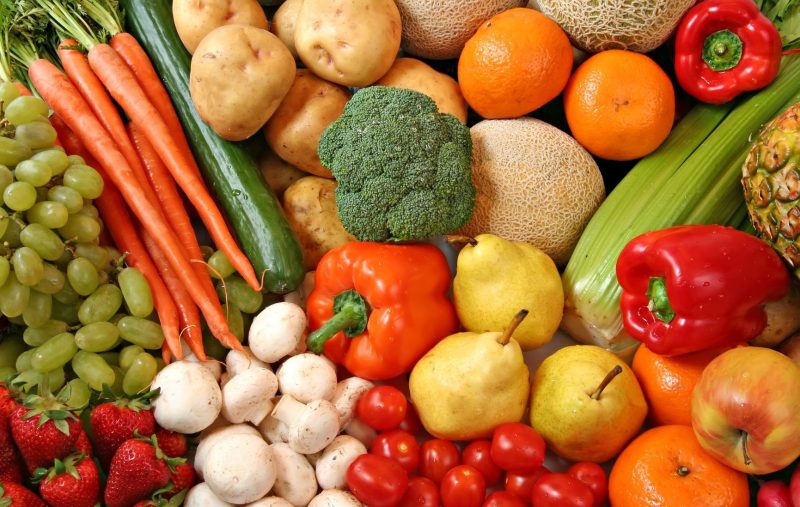
But in the body there are substances that interfere with the absorption of iron in the maximum volume.
These are polyphenols, tannins, caffeine and calcium, which are present in large quantities in:
- dairy products;
- coffee;
- tea;
- red wine;
- Coca-Cola
- chocolate.
It is not recommended to combine with them the intake of products with a high content of inorganic iron. On the contrary, the combined intake of heme and inorganic iron, that is, vegetables and meat, increases the intake and assimilation of iron by 5-10%, while it is absorbed from a vegetarian diet from 1 to 7%.
The digestion of iron from food is influenced by the state of the gastrointestinal tract. So, for example, with gastric ulcer and a decrease in the acidity level of gastric juice, iron absorption is significantly reduced.
What foods increase hemoglobin in adults?
To increase hemoglobin in adults can products of animal and plant origin.
During heat treatment, the amount of Fe decreases, so nutritionists advise to consume more vegetables and fruits in fresh form. But they will not be able to provide the body with the necessary amount of iron due to the inorganic form.
Table of plant products
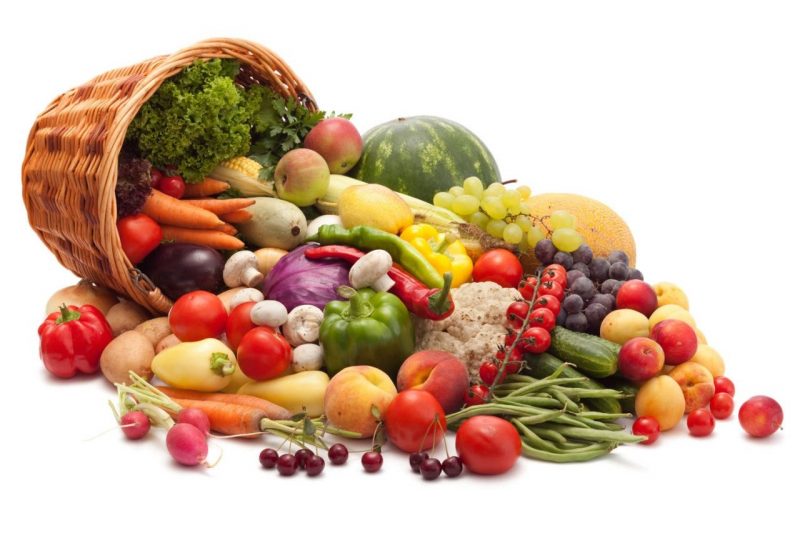
Iron plants contain no less than animal products, but they are much worse absorbed by the body. 3-8% of iron is absorbed from vegetables, and 2-3% from fruits. Therefore, the risk of developing anemia in vegetarians, vegans and raw food eaters is higher than in meat eaters. Among plant products, there are also “leaders” in Fe content. The table shows the plant products in raw and heat-treated form:
| Product name | The amount of iron (mg / 100 g) | |
|---|---|---|
| raw / fresh product | fried / boiled / dried | |
| Legumes | ||
| - peas | 7 | 1,3 |
| - red beans | 7,9 | 2,2 |
| - white beans | 10,4 | 3,7 |
| - spotted beans | 5,1 | 2,1 |
| - soy | 5,2 | 5,1 |
| - lentils | 7,3 | 3,3 |
| - turkish peas (chickpeas) | 6,2 | 1,1 |
| Spicy greens | ||
| - dill | 6,6 | 4,9 |
| - parsley | 6,2 | 2,2 |
| - cilantro | 1,8 | 0,5 |
| - basil | 3,2 | 0,8 |
| Cereal | ||
| - wheat | 5,4 | 3,5 (bread) |
| - oats | 4,7 | 4.2 (cereal) |
| - sorghum | 4,4 | - |
| - wild wheat | 3,5 | - |
| - rice | 4,5 | 3.6 (boiled) |
| - corn | 2,9 | 1,7 |
| Nuts and seeds | ||
| - sesame seeds | 14,5 | 14.5 (fried) |
| - cashew | 6,7 | 6.0 (fried) |
| - hazelnuts | 4,7 | 4.4 (fried) |
| - peanuts | 4,6 | 2.3 (fried) |
| - pistachios | 3,9 | 4.0 (fried) |
| - almonds | 3,7 | 3.7 (fried) |
| - Walnut | 2,9 | - |
| - pumpkin seeds | 8,8 | 8.1 (fried) |
| - sunflower seeds | 5,3 | 3.8 (fried) |
| - flax seeds | 5,7 | - |
| Mushrooms | ||
| - morels | 12,2 | - |
| - chanterelles | 3,5 | - |
| - champignons | 0,5 | 1.7 (boiled); 0.3 (fried) |
| Vegetables | ||
| Cabbage: | ||
| - color | 1,6 | 0.7 (boiled) |
| - Beijing | 1,3 | 0.3 (boiled) |
| - brussels | 1,4 | 1,2 (boiled) |
| Asparagus | 2,1 | 0.6 (frozen) |
| Spinach | 3,0 | 1.5 (pickled) |
| Sorrel | 2,4 | 2.1 (boiled) |
| Potatoes | 0,9 | 0.3 (boiled) 1.0 (in "uniform") |
| Jerusalem artichoke | 3,4 | - |
| Beet | 0,8 | 0,8 |
| Fruits and berries | ||
| Olives | - | 3.3 (canned) |
| Currant | 5,2 | 3.3 (dried) |
| Strawberry | 6,5 | - |
| Raspberry | 5,8 | - |
| Apricot | 4,9 | 2.7 (dried) 4.8 (dried apricots) |
| Raisins | - | 2,6 |
| Pear | 3,4 | 2.1 (dried) |
| Figs | 0,3 | 2.0 (dried) |
| Peach | 4,1 | |
| An Apple | 2,2 | 1.4 (dried) |
| Banana | 0,8 | 1.1 (dried) |
| Prunes | - | 0,9 |
The absorption of iron from plant products is worsened by phytin, a substance that is found in soy flour, rice, cereal bran. Phytates are a form of “storage” of phosphates and minerals found in plant foods. They are direct inhibitors of iron absorption and the activity of "inhibition" depends on their quantity.
Another type of iron inhibitor is polyphenolic compounds. They form insoluble compounds with Fe and prevent its penetration into the blood.
The largest amount of iron is found in dried porcini mushrooms. Legumes take the second place. They are “leaders” precisely because they contain fewer inhibitors than, for example, in cereals.
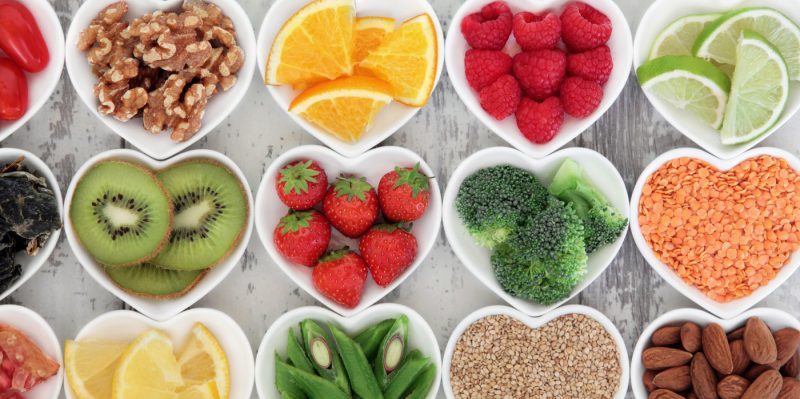
Then in the “top” of plant sources of iron is leafy greens, root crops and cruciferous. In fragrant herbs and spices there are also “inhibitory” substances.
Fruits and berries take the fourth place, but in some berries, after drying, the iron content increases. These are dried fruits, raisins, dried apricots. In vegetables, heat treatment reduces the level of metal. Of the fruits, apples, pomegranates, and peaches “stocked up” the largest amount of iron.
For those who control weight, a wonderful “snack” and a substitute for sweets are nuts, dried fruits.
Read also:low hemoglobin: causes and effects
Animal Products Table
In animal products, heme iron is more fully absorbed than inorganic. But even among them there are products recognized as leaders in the level of Fe content. Most of the iron contains the liver, but in various animals it "stores" a different amount of this necessary element.

Among seafood, the richest Fe are oysters and mussels.
The table shows the levels of iron in various products of animal origin:
| Product name | Iron activity (mg / 100 g) |
|---|---|
| Liver | |
| - veal | 14 |
| - pork | 12 |
| - chicken | 9 |
| - beef | 6,8 |
| Meat | |
| - beef | 3,1 |
| - lamb | 2,6 |
| - turkey | 1,6 |
| - pork | 1,8 |
| Milk and Dairy Products | 0,2-0,08 |
| Cheeses | 0,2-0,68 |
| Eggs | 1,75 |
| Seafood and fish | |
| - mussels | 6,7 |
| - oysters | 5,4 |
| - shrimp | 1,7 |
| - sea fish | ~2,9 |
| - River fish | ~ 0,8 |
| - anchovy | 4,6 |
Dairy products contain calcium, which greatly complicates the absorption of iron.
Nutritionists advise combining products containing organic and inorganic iron - meat with vegetables, cereals with vegetables. So more iron enters the body, as various mechanisms are used to assimilate heme and non-heme iron.
The body itself regulates the absorption of the inorganic element - if it is enough, then it is absorbed to a lesser extent from plant foods. And the absorption of organic iron does not depend on the level of its content in the body.
What vitamins promote iron absorption?
In addition to inhibitors, there are also iron absorption activators in food products. Vitamin C has the highest activating power of inorganic iron. Non-heme iron is found in plant foods in two- and trivalent forms. Fe + 3 is practically not absorbed; to convert it to Fe + 2, a reducing agent is needed. Vitamin C is such a reducing agent.
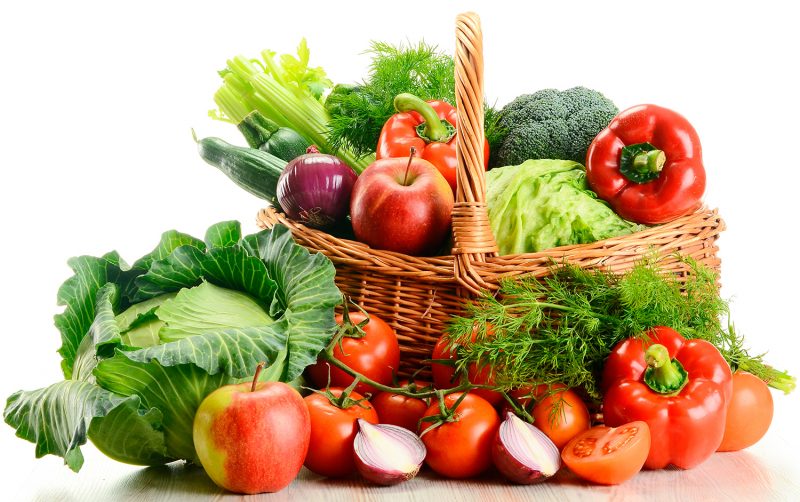
In order for iron from food to be absorbed in full, it is necessary to include in the diet products that contain ascorbic acid. At least 75 mg of vitamin A must be ingested daily.
Among the products of plant origin, the leading positions in the iron content are occupied by those that contain a large amount of vitamin C:
- in all types of cabbage;
- in papaya;
- Strawberries
- cantaloupe melon;
- kiwi;
- sweet pepper;
- parsley greens;
- green onions;
- horseradish.
There is a lot of ascorbic acid in natural freshly squeezed juice from:
- cranberries;
- citrus fruits;
- pineapple
- black currant.
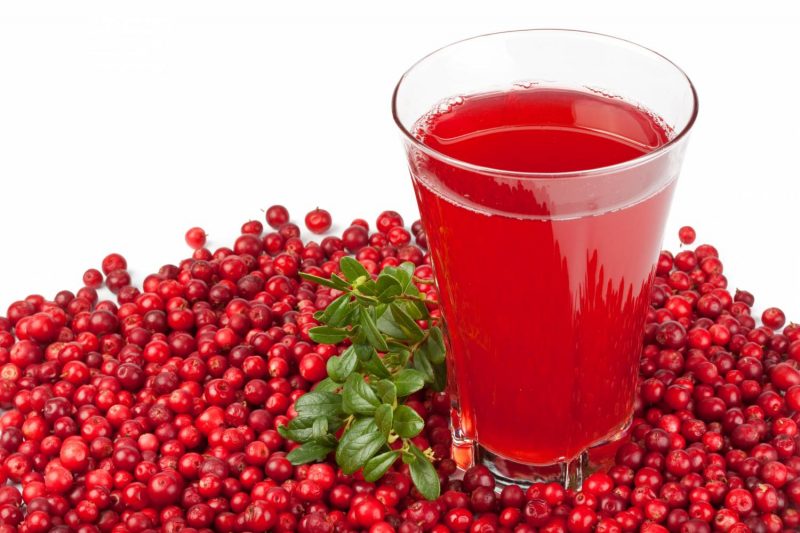
With heat treatment, vitamin C is destroyed, so meat and fish dishes must be combined with fresh vegetables.
But the absorption of iron and its intake in large quantities does not yet guarantee an increase in hemoglobin. In order for iron to bind to protein, forming hemoglobin, vitamins B – B9 and B12 are needed. They are found in liver, seafood, dark leafy greens, cheeses, eggs, beans, and whole grain products.
When compiling a diet, it is necessary to take into account the compatibility of products.
Daily iron norm
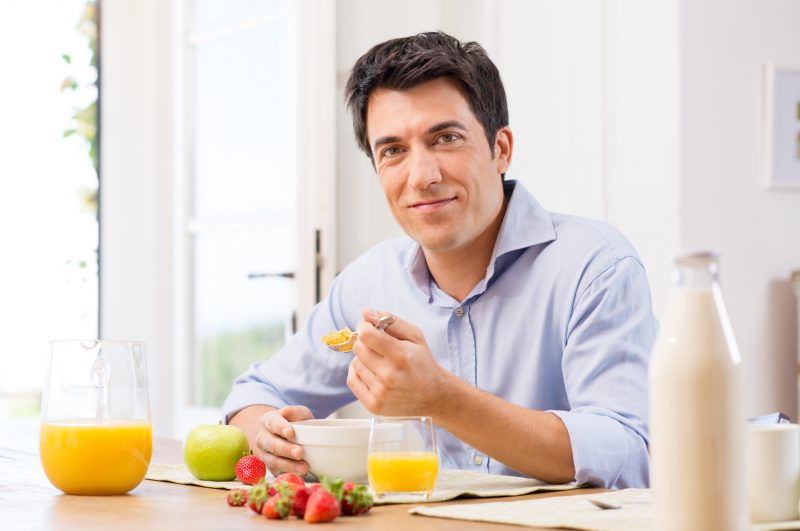
The rates of receipt of this element necessary for the body are calculated taking into account its bioavailability and depend not only on gender, but also on:
- age
- gastrointestinal tract condition;
- natural loss of blood during menstruation;
- the need to provide iron to the fetus during gestation and breastfeeding.
Given the above factors, the daily iron intake is:
- 15-20 mg for women;
- 27-33 mg during pregnancy;
- ~ 10-12 mg for men.
There are conditions in which the rate of iron intake should be increased. It:
- profuse blood loss due to injuries, surgical treatment, chronic bleeding, donation;
- significant physical exertion;
- Accommodation in highlands.
Elevated iron norm is necessary for children, since they need a large amount of this element to create a "reserve". Newborns need a daily intake of Fe in the amount of 0.25 mg until the age of 6 months. After six months, babies need 4 mg of iron daily, and from one year of age to adolescence, the norm gradually increases, reaching the daily volume in puberty in adults.
Products that increase hemoglobin in children
In newborns and children up to a year, an increase in hemoglobin is provided by breast milk. Despite the fact that breast milk does not contain much iron (0.04 mg / 100 g) and a lot of calcium, which impedes the absorption of iron, its absorption in the gastrointestinal tract is 50%. This helps to get the required amount of substance.
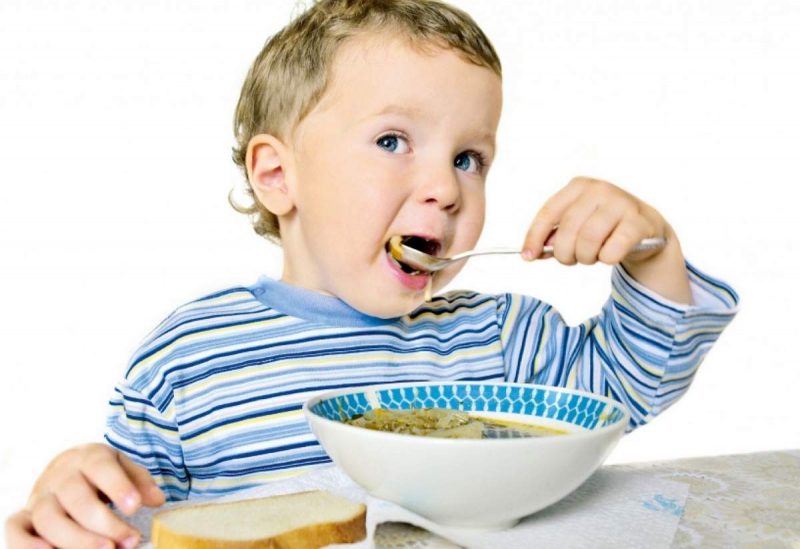
Other types of milk - cow, goat, not only contain less iron (0.02 mg / 100 g) than breast milk, but also absorbed worse (10%). Therefore, if breastfeeding is not possible, special mixtures should be used to increase hemoglobin in children. The iron contained in them is absorbed better than from other types of milk, but worse than from women's milk. The enriched infant formula has an iron content of 0.6 mg / 100 g and absorption of 20%.
With the introduction of complementary foods, the diet should be made taking into account the absorption of iron:
| Product name | Iron Content (mg / 100g) | The degree of digestibility (%) |
|---|---|---|
| Beef | heme - 1.2 non-heme - 1.8 | 23 8 |
| Rice porridge on the water | 0,4 | 2 |
| Raw carrots | 0,5 | 4 |
| Fortified Wheat Flour Products | 1,7 | 20 |
| Iron-fortified cereal products | 12,0 | 4 |
In complementary foods, meat should be introduced after six months. To increase the digestibility of heme iron from meat up to 50%, it must be combined with vegetable purees. Natural juices, fruit and berry purees also stimulate the synthesis of hemoglobin in children.
In order for a newborn to have a sufficient supply of iron for the first six months of life, it must be supplied in sufficient quantities from the mother's body during pregnancy.
How to increase hemoglobin during pregnancy
During gestation, the level of iron is very important, since it is necessary not only for the synthesis of hemoglobin in the body of a woman, but also for the deposition of an element in the body of the fetus. Due to the low digestibility of iron from synthetic preparations, its entry into the body of a pregnant woman must be provided with natural products.
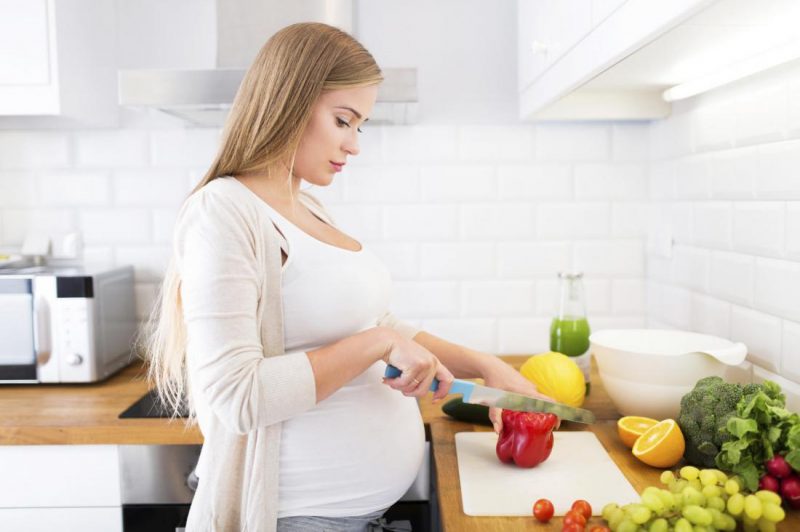
The diet of a pregnant woman should contain meat, liver, offal, fish, rich in heme iron. Moreover, they must be fresh and not subjected to freezing, long-term storage.
The source of non-heme iron and vitamin C are apples, dried apricots and natural juices, especially pomegranate. It must be diluted with water so as not to increase the acidity of the gastric juice. Products that increase hemoglobin during pregnancy are buckwheat and oatmeal porridge, cooked in milk with the addition of nuts, oilseeds. Iron-rich legumes and cabbage are not recommended for pregnant women, as they can cause increased gas formation.
During the gestation period, a physiological decrease in immunity is noted, therefore, with caution, it is necessary to use products in the woman's diet that can cause an allergic reaction - oysters, mussels, citrus fruits and strawberries.
If there is no allergy to honey, then a pregnant woman can make a paste of dried apricots, raisins, figs, dates and walnuts. All components, taken in equal proportions, are passed through a meat grinder, mixed with honey and lemon juice. Such a product, rich in vitamins and iron, can be stored in the refrigerator for a long time and there is 1 tbsp. spoon twice a day.
Effective Products for the Elderly
According to studies in the elderly, the intake of nutrients and energy is only 35-40% of the necessary, and the diagnosis of "anemia" occurs in 40% of the elderly. With age, the absorption of iron from food decreases. Before deciding how to increase hemoglobin in the elderly, it is necessary to find out the reasons for the decrease in the absorption of iron in this age group.

The level of micronutrient intake is affected by:
- physiological restructuring of the body;
- loss of dentition;
- digestive disorders;
- blood loss in the pathology of the gastrointestinal tract;
- systemic diseases;
- insufficiency of material resources;
- mental disorders;
- limited self-service ability.
All this leads to insufficient intake of nutrients from food due to a decrease in its volume and quality. A common cause of anemia is a deficiency of vitamin B 12 and folic acid (B9). In order to increase the synthesis of hemoglobin, it is necessary to use products containing not only high levels of iron, but also vitamins C, B9 and B12. To restore the hemoglobin level in elderly patients, it is necessary that 150-300 mg of ferrous iron enter the body with food.
But in old age, it is rarely possible to stabilize the hemoglobin level only with a diet high in iron. As a rule, in the presence of systemic diseases that impede the absorption of iron, its additional administration in the form of medications is necessary.
Iron metabolism in the human body is a complex multi-level system. To maintain the amount of hemoglobin at the physiological level, it is necessary to take into account many factors that affect the intake, absorption and transport of iron. The correct preparation of the diet largely solves the problems of anemia at different ages.












